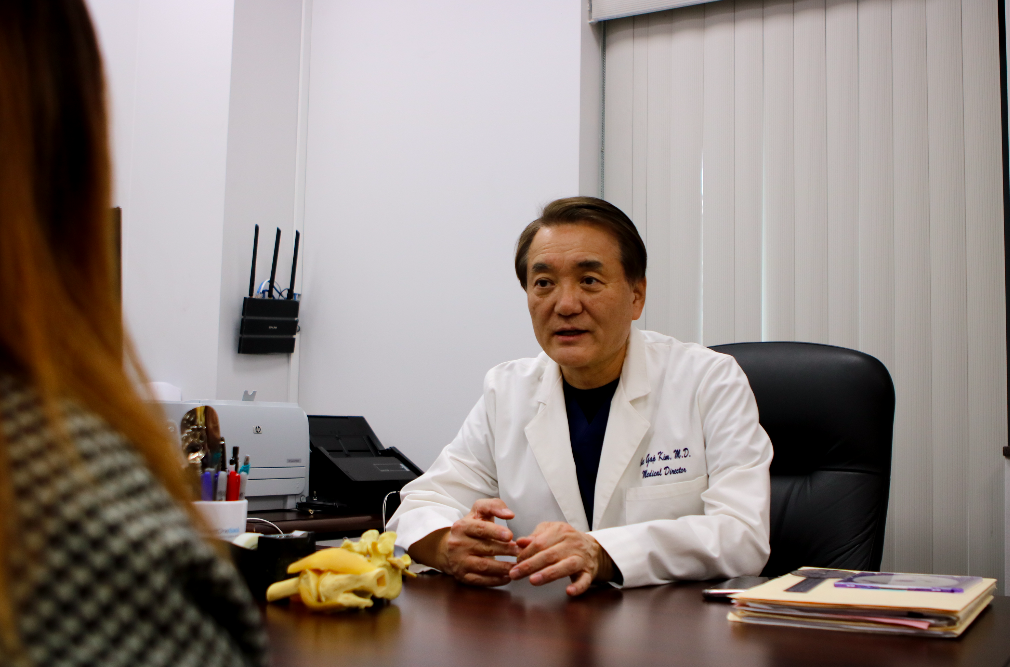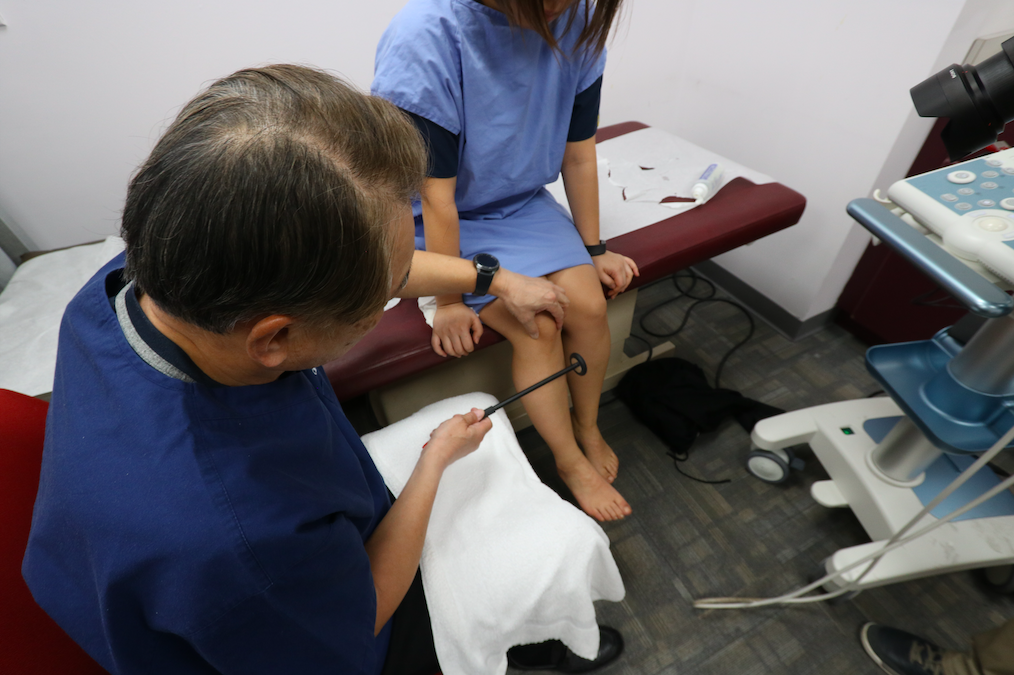Health
Pain-Free New Year

Chronic pain can be overwhelming. Unfortunately, millions of Americans suffer from pain caused by various ailments every year, which affects their life quality and ability to perform daily tasks. Fortunately, you don’t have to suffer from pain every year. You can do some activities to help you lessen the pain and focus more on the things you love.
Here are some things to do to have a pain-free new year.
1. Learn Meditation Techniques
Good meditation techniques, coupled with deep breathing, can help your body relax and ease your pain. This duo loosens the tightness that’s in the muscles and sends them a message to relax. You can engage in various meditation ways, though the common one is by repeating some phrases in your mind. As you repeat those phrases, ensure that you ignore your thoughts and focus on your breathing. Taking a meditation class can also help you grasp meditation techniques well.
Deep breathing is also an excellent companion to meditation. Like meditation, it can help you to relax your muscles. However, to effectively practice this technique, you need to assume a comfortable body position, get a quiet location, and block out destructive thoughts. After doing that, take deep breaths that will fill your abdomen with air, then exhale it out like a deflating balloon.
2. Minimize Stress
Negative feelings such as anxiety, depression, anger, and stress, makes the body more sensitive to pain. Managing your stress can help you find relief from pain. Some techniques to minimize stress and promote relaxation include listening to soothing music and taking a walk. You can also purchase specially designed relaxation CDs or use mental guided imagery to calm your mind. The activities you engage in to minimize stress should relax your muscles and make your mind peaceful.

3. Exercise
Exercise is vital because it stimulates the brain to produce endorphins, which block pain signals and enhance mood. Exercise can also strengthen your muscle and reduce your chances of injury and feeling pain.
If you have diabetes, obesity, or heart disease, exercise can help you mitigate them. However, if you’re diabetic or neuropathic, you need to be careful about the type of exercises you engage in. It’s advisable to consult your doctor and ask him or her the types of physical activities that can fit your body.
4. Join Support Groups
Copying with pain alone can be quite difficult. That’s why most patients suffering from pain are advised to join support groups to meet with other people who’re also experiencing pain. Being in such a group and learning how to cope with pain from others who experience a similar situation can reduce pain.
It would be best to meet with a mental health professional because excruciating pain often leads to depression. If you’re counseled by a professional, you’ll learn how to cope better and avoid negative thoughts that worsen the pain. Having a healthier attitude and asking for help can strengthen you during your journey.
Conclusion
Tolerating pain isn’t easy if you don’t know what to do to lessen it. However, if you know the right activities to engage in, you’ll find coping with pain easier and may even reduce its impact on your life.
Website – https://kimpain.com/
Health
White Boogers in Babies: What They Mean and How to Keep Little Noses Clear

Spotting white boogers in your baby’s nose can make any parent pause and wonder if something’s wrong. Is it a cold? An allergy? Or just part of being a baby? In most cases, white mucus is perfectly normal—it’s your baby’s way of clearing out dust, dry air, or mild irritants. Unlike adults, babies can’t blow their noses, so even small buildups can make breathing sound stuffy or snuffly.
For safe and effective relief, a nasal aspirator for baby from Momcozy can be your best ally. It helps gently remove mucus without irritating delicate nasal passages, offering comfort and clear breathing in seconds. Understanding what white boogers indicate—and when to worry—helps parents handle congestion with confidence and care.
Just Mucus: What White Snot Tells You About the Nasal Passage
White boogers are often a sign of mild dryness or early-stage congestion. When mucus lacks enough moisture, it thickens and appears cloudy or white instead of clear. This is your baby’s natural defense system working to trap dust, germs, and other particles from the air.
The good news? White mucus typically means your baby’s body is managing irritants effectively. It’s not usually a sign of infection but rather a normal part of mucus production—especially in dry or air-conditioned environments.
The Anatomy of Dryness: Why White Boogers Are Often a Sign of Low Humidity
If your baby wakes up with white or crusty boogers, it may be because the air around them is too dry. Indoor heating, air conditioners, or even fans can lower humidity levels, drying out your baby’s nasal membranes.
Dry air thickens mucus, making it appear opaque or white. This can lead to mild congestion, snoring sounds, or harder boogers around the nostrils. Running a cool-mist humidifier near your baby’s crib helps maintain ideal moisture levels in the air and keeps nasal passages naturally clear and soft.
The Pre-Color Phase: Is White Mucus Just the Beginning of a Cold?
Sometimes, white mucus can indicate the very early stage of a common cold. When a virus first enters your baby’s system, the body produces thicker mucus to trap and remove it. During this phase, mucus may shift from clear to white before becoming yellow or green as immune cells become more active.
If your baby’s only symptom is mild congestion and no fever or fussiness, there’s usually no need to worry. Keep an eye on the mucus color and texture—if it thickens or changes color alongside symptoms like irritability or poor feeding, it might be time to consult your pediatrician.
How to Help: Gently Rehydrating the Nasal Airway with Saline Solution
Rehydrating your baby’s nasal passages is one of the simplest and safest ways to handle white boogers. Saline drops or sprays help loosen thick mucus, making it easier to remove.
Here’s how:
-
Lay your baby on their back with their head slightly tilted.
-
Apply one or two drops of saline into each nostril.
-
Wait about 30 seconds to allow the solution to soften the mucus.
-
Use a nasal aspirator for baby to gently suction out the mucus.
Repeat this process before feeding or sleep times to ensure your baby can breathe comfortably throughout the day and night.
Boosting the Environment: The Key Role of Humidifiers in Reducing Dry Mucus
A well-hydrated environment does wonders for preventing nasal dryness and white mucus. By maintaining optimal humidity levels (around 40–50%), you help keep your baby’s nasal membranes moist and functional.
Running a humidifier, especially during dry or cold months, is an effective preventive measure. It keeps mucus from hardening, making it less likely for your baby to develop congestion. Pair this with regular cleaning of the humidifier to prevent mold and bacteria growth that could worsen nasal irritation.
The “Milk Crud” Myth: Distinguishing White Mucus from Spit-Up or Formula Residue
Parents often confuse white boogers with dried milk or formula residue—especially if it’s seen near the nostrils or mouth. The difference lies in texture and location.
White mucus tends to be sticky and stretchy, while milk residue looks flaky or chalky. If your baby spits up frequently, it’s possible for small amounts of milk to reach the nasal area, especially during sleep.
Safe Removal Techniques: Getting Stubborn White Boogers Out Without Irritating the Nose
When boogers become hard or stuck, resist the urge to pick them out with your fingers or a cotton swab. This can scratch your baby’s delicate nasal lining and cause bleeding. Instead, soften the area first.
You can do this by:
-
Applying a few saline drops to loosen the mucus.
-
Running a steamy shower for a few minutes to let your baby inhale warm moisture.
-
Using a Momcozy nasal aspirator for baby to gently suction out the softened mucus.
-
Wiping the outside of the nostrils with a clean, damp cloth.
These steps ensure a safe and gentle cleaning process while avoiding any harm to your baby’s nose.
When to Check In: When White Snot Is Accompanied by Other Concerning Symptoms
White boogers alone are rarely a reason to panic, but if they’re accompanied by other symptoms, it may be time to seek medical advice.
Call your pediatrician if you notice:
-
Persistent nasal congestion lasting more than a week.
-
Difficulty breathing or feeding.
-
Fever or irritability.
-
Thick white mucus that turns yellow or green with time.
These signs may indicate an infection or allergy that needs professional attention. Always trust your instincts—if your baby seems uncomfortable or their breathing changes, getting checked is the best course of action.
Summary
In most cases, white boogers in babies are simply a sign of dryness or mild congestion, not illness. Your baby’s nose is just doing its job by trapping dust and debris. Keeping the air humid, using saline drops, and clearing mucus gently with a nasal aspirator for baby can prevent discomfort and ensure easy breathing.
However, it’s important to stay observant. If the white mucus persists, thickens, or is paired with symptoms like fever or poor feeding, contact your pediatrician. With regular nasal care, proper hydration, and the right tools, you can keep your baby’s tiny nose clear, healthy, and ready to take in every breath with ease.
-

 Tech5 years ago
Tech5 years agoEffuel Reviews (2021) – Effuel ECO OBD2 Saves Fuel, and Reduce Gas Cost? Effuel Customer Reviews
-

 Tech6 years ago
Tech6 years agoBosch Power Tools India Launches ‘Cordless Matlab Bosch’ Campaign to Demonstrate the Power of Cordless
-

 Lifestyle6 years ago
Lifestyle6 years agoCatholic Cases App brings Church’s Moral Teachings to Androids and iPhones
-

 Lifestyle5 years ago
Lifestyle5 years agoEast Side Hype x Billionaire Boys Club. Hottest New Streetwear Releases in Utah.
-

 Tech7 years ago
Tech7 years agoCloud Buyers & Investors to Profit in the Future
-

 Lifestyle5 years ago
Lifestyle5 years agoThe Midas of Cosmetic Dermatology: Dr. Simon Ourian
-

 Health7 years ago
Health7 years agoCBDistillery Review: Is it a scam?
-

 Entertainment6 years ago
Entertainment6 years agoAvengers Endgame now Available on 123Movies for Download & Streaming for Free
